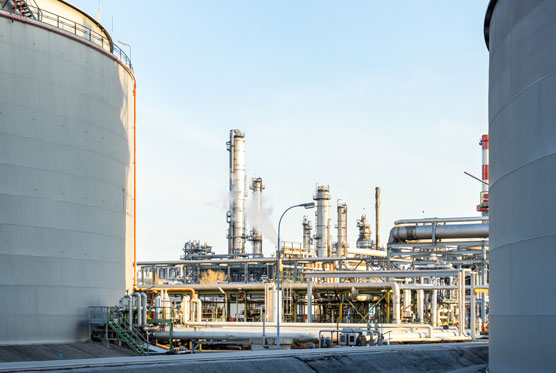Press release 2021-12-17 at 8:53

© Photo by Dimitry Anikin at Unsplash
There is a clear need to increase the knowledge of the industrial sources of hazardous chemicals and to apply measures to reduce their use and emissions to the environment. The EU funded project HAZBREF worked for more than 3 years to identify the hazardous chemicals used in industrial sectors, their use patterns, environmental characteristics, and possible ways to prevent and reduce their releases to the environment.
On the EU level the main instrument to control industrial releases is the Industrial Emissions Directive. This is done particularly through the publication of Best Available Techniques Reference Documents (BREFs). However, in most cases hazardous substances have not been comprehensively addressed in BREFs.
“The current BREFs have been successful in reducing the emissions of many traditional hazardous substances, such as heavy metals and dioxins. Now we should move on to other hazardous substances, those chemicals, which are not yet adequately addressed in the BREFs,” says Kaj Forsius, the BREF Coordinator at the Finnish Environment Institute and the Project Manager of the HAZBREF.
The objective of the Industrial Emissions Directive is to achieve a high level of environmental protection. This target can only be achieved when the BREFS address all relevant chemicals and substances potentially released from industrial processes, both the ones that have already been identified as hazardous and regulated, as well as the less known and non-regulated ones.
Chemical data should be put in use
The project has published a report that includes recommendations on how to strengthen chemicals management in BAT Reference documents (BREFs) and how relevant information on chemicals used in or released from industrial processes can be more systematically addressed during BREF reviews. Special emphasis is given to the data generated in the context of other pertinent EU legislation such as REACH and POPs regulation and the Water Framework Directive (WFD). This data should be better used in BREFs.
“When the use and risks of chemicals are better addressed in BREF Documents, the operators can manage industrial chemicals better and the authorities can target relevant chemicals in permitting and supervising,” says Michael Suhr, the lead author of the report from the German Environment Agency UBA. “This will clearly contribute to the reduction of the use of hazardous substances in industrial installations and thereby diminish the emissions to the environment.”
The key proposals of HAZBREF are:
- further systemic cooperation and exchange of information between the European IPPC Bureau that coordinates the BREF work and the chemical experts from REACH, WFD and the POP convention community
- reinforce the BREF Technical Working Group (TWG) with knowledge on chemicals in order to identify the hazardous chemicals relevant for a given industrial sector and to strengthen the measures to control them
- include a specific chapter on chemicals in all BREFs and BAT conclusions.
“The proposals made in the HAZBREF project can further strengthen the future BAT conclusions and support the IED in achieving the European Green Deal´s zero pollution ambition for a non-toxic environment,” says Michael Suhr.
Contacts:
- Project Manager Kaj Forsius, Finnish Environment Institute, tel. +358 46 850 9212 (also +358 295 251 119), e-mail: firstname.lastname@syke.fi
- BREF Coordinator Michael Suhr, German Environment Agency UBA, tel. tel. +49 (0) 340 2103 2490, e-mail: firstname.lastname@uba.de
- Communications Specialist Eija Järvinen, Finnish Environment Institute, tel. +358 295 251 242, e-mail: firstname.lastname@syke.fi
+ Link to the report: Strengthening chemicals management in Best Available Techniques Reference Documents, Reports of the Finnish Environment Institute 48/2021
Project HAZBREF was funded by the EU Interreg Baltic Sea Region Programme. The project started in October 2017. Project partners include Finnish Environment Institute (coordinator), German Environmental Agency, Swedish Environmental Protection Agency, Estonian Environmental Research Center and Polish Institute for Ecology of Industrial Areas. The project had 27 associated organizations, including national and regional public authorities, sectoral agencies, and interest groups.
Link to the project web site
|